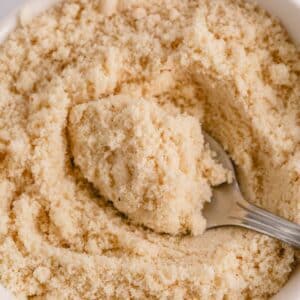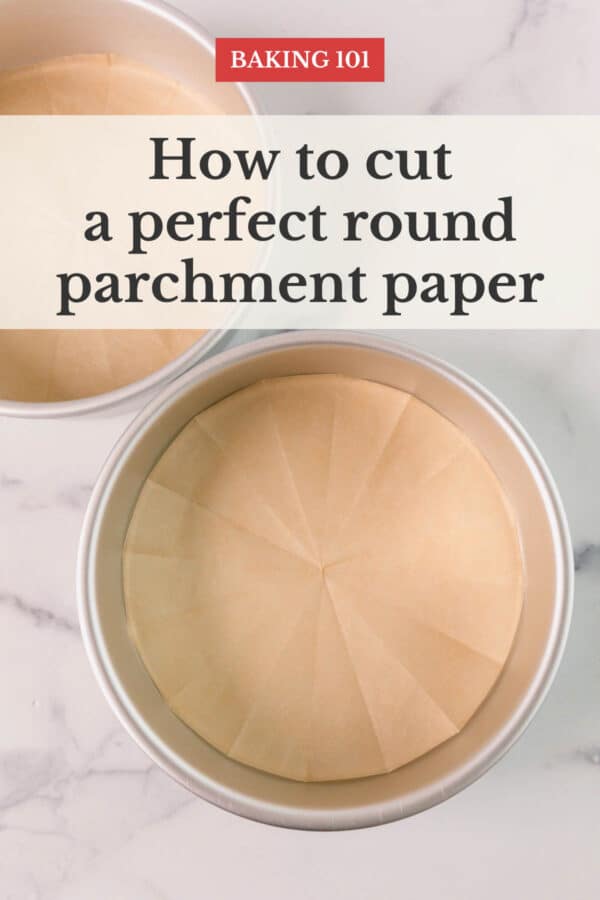This easy tutorial on how to dry oily almond flour will help you to prevent blotchy, wrinkly macaron shells.

Table of Contents
What is almond flour?
Almond flour is blanched almonds finely ground into a powder-like consistency. It is commonly used as a gluten-free alternative to wheat flour in baking and cooking. French macarons are commonly made with almond flour.

Almond Flour Quality
The quality of almond flour directly affects the quality of your macarons. And oily almond flour is the main culprit for soft, fragile macaron shells with thin wrinkly tops.
To prevent this issue, be sure to use nice and fluffy almond flour that is not heavy and oily.
To test if your almond flour is too oily, take a small handful of almond flour in your hand and give it a light squeeze. If it clumps into a ball, your almond flour is too oily to make macarons.

Other signs of old, oily almond flour
Watch out for the following signs of old almond flour:
- Resembles heavy, wet sand
- Has lots of clumps of almond flour
- Has yellow tint
- Also, look for any unusual odors or signs of mold. Rancid flour will have a bitter, unpleasant smell.
On the contrary, fresh almond flour should be
- fluffy and light
- with light beige color
- doesn’t clump into a ball with a light squeeze.
How to dry oily almond flour:
Preheat the oven to 300°F (150°C).
- Line a baking sheet with a couple of layers of paper towel.
- Spread the oily almond flour evenly right over the paper towel.

- Place another couple of layers of paper towel over the almond flour.
- Put another baking sheet on top.

- Bake for 20-25 minutes.
- Cool the almond flour with the paper towels and baking sheet on top for at least 30 minutes. (TIP: You can also place something heavy on top of the baking sheet to help absorb the excess oil while cooling.)

Absorb extra oil
You can also place something heavy on top of the baking sheet to help absorb the excess oil while cooling.
- Remove the baking sheet on top and the paper towel once it’s cooled completely.

Look how much oil the paper towels have absorbed! And this almond flour wasn’t even that oily.

How to store almond flour:
Storing almond flour properly is important to maintain its freshness and extend its shelf life, as its higher fat content can cause it to spoil or become rancid more quickly than all-purpose flour.
For short-term storage:
- Store almond flour in an airtight container in a cool, dark place. A pantry or cupboard away from direct sunlight or heat sources is ideal. Exposure to air and heat can speed up the oxidation process, leading to rancidity.
For long-term storage:
- Refrigerator: Store almond flour in the refrigerator for longer shelf-life. The cooler temperatures help preserve the flour’s freshness and slow down the fat from going rancid.
- Freezer: Almond flour can also be stored in the freezer, which is the best option for extending its shelf life. In the freezer, almond flour can last for several months up to a year. Make sure the container is airtight and moisture-proof. There’s no need to thaw the flour before using it; almond flour can be used directly from the freezer since it doesn’t freeze solid and remains loose.
Other Recipes with Almond Flour:

How to Dry Oily Almond Flour
Ingredients
- Oily almond flour
Equipment
- 2 baking sheets
- Paper towel
Instructions
- Preheat the oven to 300°F (150°C).
- Line a baking sheet with a couple of layers of paper towel.
- Spread the oily almond flour evenly right over the paper towel.
- Place another couple of layers of paper towel over the almond flour.
- Put another baking sheet on top.
- Bake for 20-25 minutes.
- Cool the almond flour with the paper towels and baking sheet on top for at least 30 minutes. (TIP: You can also place something heavy on top of the baking sheet to help absorb the excess oil while cooling.)
- Once cooled completely, remove the baking sheet on top and the paper towel.





